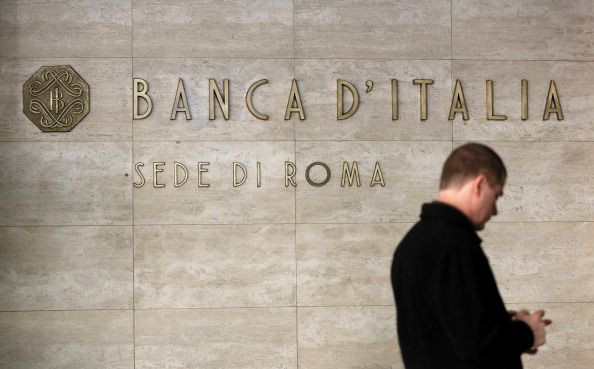European Banks May Suffer More Than $900 Billion In Loan Losses Over Next Three Years

KEY POINTS
- In best-case scenario -- no second virus wave -- loan losses at European banks would amount to €400 billion.
- Banks’ non-performing loan ratios could climb to 10% of their total lending volumes
- European banks are only about half as profitable as their American peers
Banks in Europe may suffer up to €800 billion ($916 billion) of loan losses over the next three years if the COVID-19 pandemic worsens, warned the New York-based global management consulting firm Oliver Wyman.
In Oliver Wyman’s best-case scenario, which assumes a slow economic rebound in most nations and no lockdown, loan losses at European banks would amount to €400 billion ($458 billion) over the next three years. In its worst-case scenario -- a second wave of the virus -- that expected loss figure would double, while the banks’ non-performing loan ratios would climb to 10% of their total lending volumes.
“The pandemic is unlikely to cripple the [European banking] sector, however many banks will be pushed into a limbo state with very weak returns,” said Christian Edelmann, co-head of European financial services at Oliver Wyman. “They will be highly susceptible to further shocks, tend to be risk-averse in lending and will struggle to fund transformation efforts.”
Some banks in Europe and the U.K. are still struggling with the after-effects of the 2008 financial crisis. Since that time they have endured falling earnings and increased competition.
On the whole, European banks are only about half as profitable as their American peers.
Meanwhile, as European lenders prepare to release second quarter earnings, some major banks, including Deutsche Bank, warned they are taking even larger loan loss provisions compared to the first quarter.
Oliver Wyman also projected that due to long-term, low interest rates, revenues at European banks may drop by €180 billion ($206 billion) this year to €385 billion ($440 billion), even if a second lockdown does not occur. By 2022, revenues could still be €30 billion ($34.3 billion) lower than 2019 levels.
Moreover, net interest income – which is the difference between deposit and lending rates – is expected to drop by 8% in 2021 compared to pre-pandemic 2019. This will particularly hurt banks that depend upon consumer and commercial lending.
“Low profitability is not just a problem for shareholders. A subsequent crisis, potentially a second pandemic wave, or another shock, would cause losses to flow straight through into the capital bases of these banks,” raising the possibility of more government interventions, Oliver Wyman added.
The consultancy suggested that to survive the ongoing crisis, European banks will have to continue to cut costs and reduce their balance sheets.
“Ambitious restructuring efforts will be needed, but to succeed they will need engagement and support from policymakers and regulators,” Edelmann said.
Separately, credit ratings agency Moody’s Investor Service said that loans made by European banks to small and mid-size enterprises, or SMEs, as well as unsecured consumer loans are at the highest risk of default.
Moody’s noted that banks in southern Europe have the highest exposure to SMEs, while large banks in Germany and the U.K. have relatively low exposures.
Exposures to unsecured consumer loans rank the highest for banks in Spain, Austria, France and the U.K.
© Copyright IBTimes 2025. All rights reserved.





















